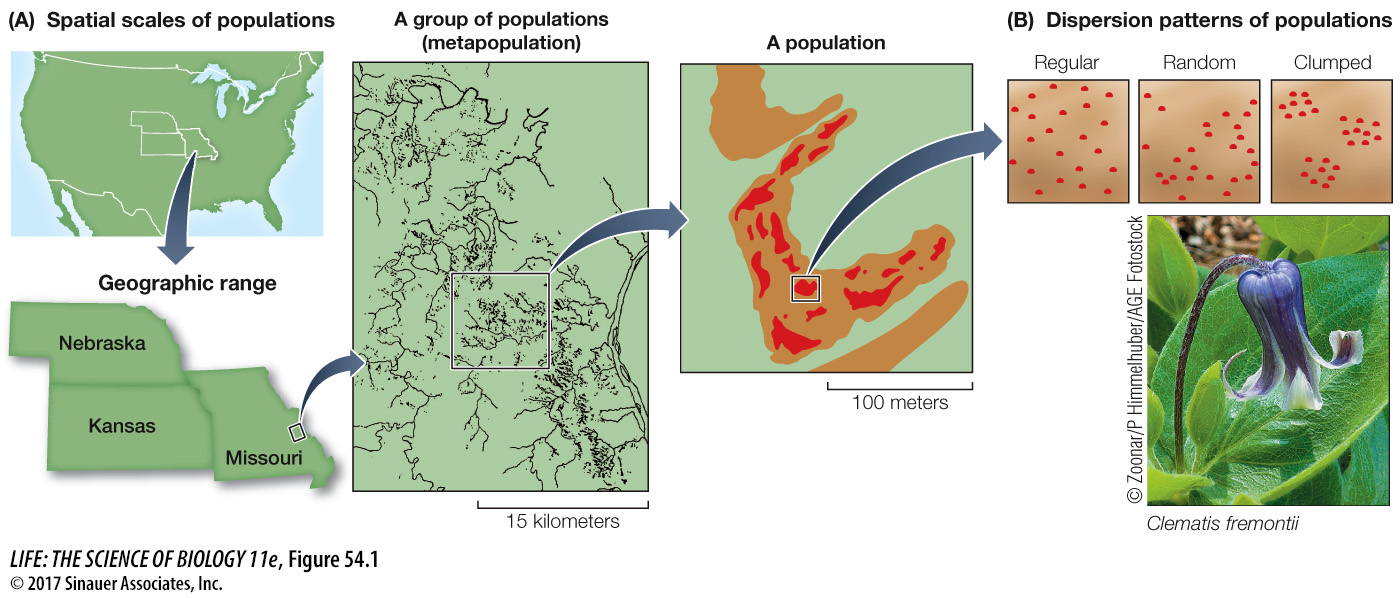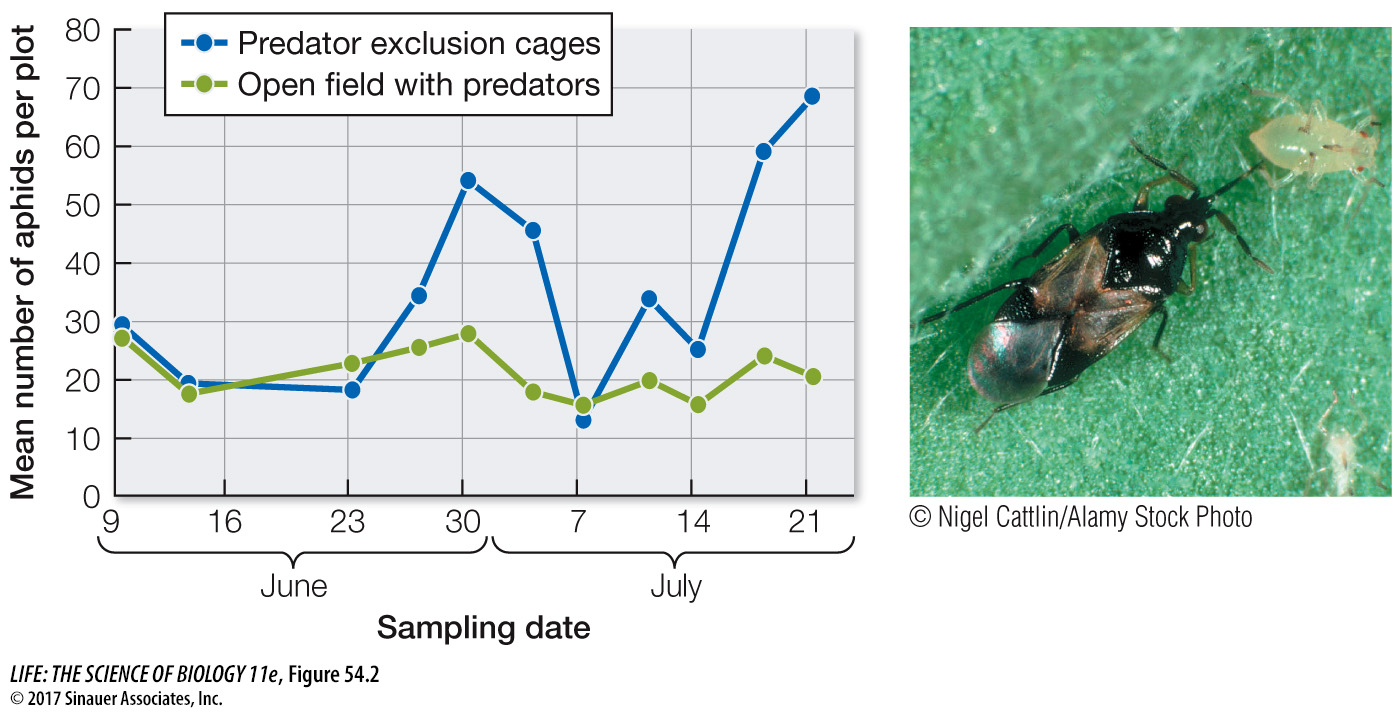key concept
54.1
Populations Show Dynamic Variation in Size over Space and Time
key concept
54.1
Populations Show Dynamic Variation in Size over Space and Time
Species, whether they are humans, yeast, or giant redwood trees, are divided into groups of individuals, or populations. A population is a group of individuals of the same species within a given area that have the potential to interbreed and interact with one another. As you might expect, populations vary in their population size—the numbers of individuals within a population. Well before ecology became a distinct biological discipline, humans were interested in population dynamics, or the patterns and processes of population change over space and time. Growing crops, raising livestock, and controlling pests all involve paying attention to population dynamics. To this day, game wardens, park managers, and conservation biologists aim to maintain stable populations of fish, wildlife, and threatened or endangered species in the face of change. Here we consider population dynamics in more detail.
focus your learning
Populations are dynamic; they vary in size, range, and dispersion patterns, and they vary over time.
Three main factors affect population dynamics: the physical environment, biological interactions, and dispersal.
Ecologists estimate population size and extent using a variety of techniques.
Part of the dynamism that populations show is a consequence of their distribution across the landscape (Figure 54.1A). For example, distribution maps of the herbaceous perennial Clematis fremontii show that it is patchily distributed across Missouri, Kansas and Nebraska. Here populations are restricted to dry, rocky meadows formed on particular limestone outcrops within the region. Populations, such as those of Clematis, rarely occur in isolation from one another but are usually connected through dispersal. Dispersal is simply the movement of individuals into (immigration) or out of (emigration) an existing population. A group of geographically isolated populations linked together by dispersal is known as a metapopulation. For example, a cluster of meadows might be considered a metapopulation if Clematis seeds from one meadow had the potential to disperse to another meadow. At larger spatial scales, the entire geographic range or distribution of a species might consist of one or multiple metapopulations, depending on the extent of the area occupied by a species.

Species differ greatly in their geographic ranges—
Within a population, the spatial arrangement of individuals may vary in what are known as dispersion patterns. Ecologists recognize three basic dispersion patterns: (1) regular (or uniform) dispersion, characterized by evenly spaced individuals, (2) random dispersion, in which individuals are randomly spaced, and (3) clumped dispersion, in which individuals tend to be clustered in groups (Figure 54.1B). As we will consider later in this section, multiple processes such as resource availability, species interactions, and dispersal can shape the dispersion patterns we see in nature.
Populations can vary over time as well. For example, some populations may show “boom and bust” cycles, such as we see for bacteria, yeast, and phytoplankton, in which the population size can vary over just a few minutes to days. Species that show wide fluctuations in population size tend to have reproductive strategies that allow them to respond rapidly to changing resources. They may also have predators that are able to take advantage of these outbursts in growth. For example, aphids engage in parthenogenetic reproduction—
